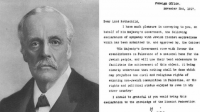
Links
Sheba Medical Centre
Melanie Phillips
Shariah Finance Watch
Australian Islamist Monitor - MultiFaith
West Australian Friends of Israel
Why Israel is at war
Lozowick Blog
NeoZionoid The NeoZionoiZeoN blog
Blank pages of the age
Silent Runnings
Jewish Issues watchdog
Discover more about Israel advocacy
Zionists the creation of Israel
Dissecting the Left
Paula says
Perspectives on Israel - Zionists
Zionism & Israel Information Center
Zionism educational seminars
Christian dhimmitude
Forum on Mideast
Israel Blog - documents terror war against Israelis
Zionism on the web
RECOMMENDED: newsback News discussion community
RSS Feed software from CarP
International law, Arab-Israeli conflict
Think-Israel
The Big Lies
Shmloozing with terrorists
IDF ON YOUTUBE
Israel's contributions to the world
MEMRI
Mark Durie Blog
The latest good news from Israel...new inventions, cures, advances.
support defenders of Israel
The Gaza War 2014
The 2014 Gaza Conflict Factual and Legal Aspects
To get maximum benefit from the ICJS website Register now. Select the topics which interest you.
Is a House a Home in Hebron?
Amid a week of Middle East turbulence, with the roller coaster ride of Syrian disintegration momentarily offset by a telephone conversation between the Iranian and American presidents, the fate of a house in Hebron may seem inconsequential.
But Hebron is no ordinary place. Abraham’s purchase of the Machpelah cave as the burial site for Sarah was the first parcel of land owned by the Jewish people in their promised homeland. The most ancient Jewish city in the world, long antedating Jerusalem as a sacred site for Jews and preceding it as the capital of David’s kingdom, Hebron has a unique place in Jewish history. It has remained a revered holy site, and a place of Jewish habitation, ever since.
One week ago the murder of IDF Sgt. Gal Kobi, shot in the neck by a suspected Palestinian sniper at an army checkpoint near the Machpelah cave, thrust Hebron back into the news. To be sure, the murder of Jews there is hardly novel. In 1929 a wave of Arab rioting, when sixty-seven Jews were brutally slaughtered, decimated the centuries-old Jewish community.
Restored to Jewish habitation by religious Zionist settlers after the Six-Day War, the Hebron community now numbers some seven hundred residents and two hundred yeshiva students. They inhabit the restored Jewish neighborhood adjacent to the Machpelah holy site, which Muslims enclosed inside a mosque and prohibited Jews from entering for seven centuries until 1967.
The murder of Sgt. Kobi revived sorrowful memories of the sniper killing of seven-month-old Shalhevet Pas in the Avraham Avinu quarter of Hebron in 2001. Responding to that tragedy, Hebron Jews reclaimed and inhabited abandoned property purchased for the Jewish community a century earlier – but eventually they were forced out by their own government.
Then, after twelve Israelis were murdered in a Palestinian terrorist attack , Hebron Jews purchased a four-story building that overlooked the massacre site from a willing Palestinian seller. Despite a video of the seller receiving and counting his money, the Israeli government once again expelled the new Jewish residents.
This time, however, seemed different. Prime Minister Netanyahu quickly responded to the Kobi murder with a directive authorizing Hebron Jews to move into Beit haMacheplah, Jewish-owned property adjacent to the spot where Sgt. Kobi was killed. Within hours, he declared: “Those who attempt to uproot us from the city of our forefathers will achieve the opposite effect. We will continue on one hand to fight terror and to harm terrorists and on the other hand to strengthen settlements.”
Not so fast. Months earlier a military appeals court had validated the purchase of Beit haMachpelah. But two days after their return, the new residents were expelled. To inhabit the building they owned, Hebron Jews needed a final signature of approval from Defense Minister Moshe Ya’alon. In a temporary gesture, Ya’alon issued a “transaction permit,” briefly allowing Jews to enter, but not yet inhabit, the house.
Fourteen Arab residents of Hebron then petitioned the High Court of Israel to prevent the entry of Jews into Beit HaMachpelah. The Court ordered the state to respond to the petition by this coming Tuesday. Under pressure, Netanyahu’s “other hand” quickly withered. He backed off, explaining that he was only “expressing support for populating the building after the completion of the appropriate procedures.”
On Monday, as it happens, Netanyahu will meet with President Obama, suddenly riding high following his prearranged telephone call to Iranian President Rouhani after his prolonged dithering over Syria. In their White House meeting, and in his Tuesday address to the United Nations, Netanyahu will have ample opportunity to demonstrate his determination to “strengthen settlements.”
It is an opportunity that he is unlikely to grasp. Beit HaMachpelah is located on the border of the 80 percent of Hebron that is under Palestinian Authority control, granted by the Hebron Protocol to which Netanyahu capitulated under American pressure in 1997 during his first term as prime minister.
When Abraham purchased the Machpelah cave, there was no Israeli Prime Minister, Defense Minister or High Court to exclude or expel Jews from property they owned. Times have changed in the State of Israel. Regardless of their party affiliation, prime ministers ever since 1967 have thwarted the growth of the Hebron Jewish community and the fusion of Zionism and Judaism that it symbolizes. Will Netanyahu once again follow in their footsteps?
Jerold S. Auerbach is author of the forthcoming Jewish State/Pariah Nation, to be published by Quid Pro Books.
# reads: 197
Original piece is http://www.algemeiner.com/2013/09/30/is-a-house-a-home-in-hebron/





















